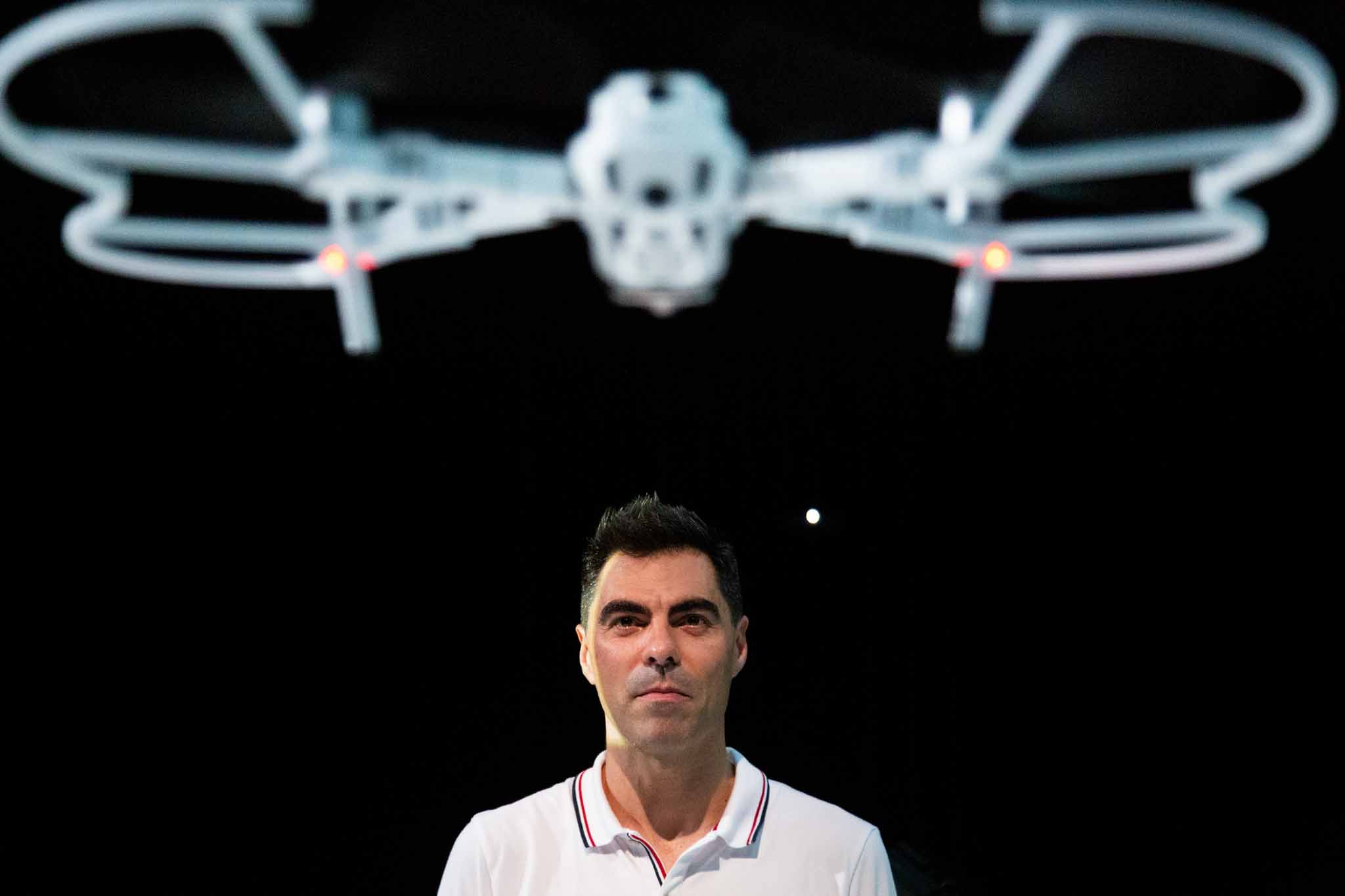Spektaklis „Kalnas“ – tai sąsaja, jungianti pirmąją ekspediciją į Everestą, kurios sėkme vis dar abejojama; Orsoną Wellesą, pasėjusį paniką savo radijo laidoje „Pasaulių karas“; badmintono žaidėjus, žaidžiančius beisbolą; netikrų naujienų svetainę; bepilotį droną, stebintį publiką; gausybę sniego; mobiliuosius ekranus; fragmentiškus vaizdus ir Vladimirą Putiną, su pasimėgavimu pamokslaujantį apie tiesą ir pasitikėjimą.
Tai puikiai žinomas įvaizdis, besitęsiantis per visą idėjų istoriją: kopimas į kalną, įveikiant visus sunkumus, norint pasiekti viršūnę, o tada jau nuo jos pamatyti pasaulį „tokį, koks jis yra“. Pamatyti tiesą, o ne tik šešėlius ir atspindžius. Tai tikrai gražus įvaizdis. Bet ar teisingas? Dažnai žiūrint iš viršaus į apačią nematyti nieko, tik visa dengiantys debesys, rūkas ar priklausomai nuo paros laiko ir oro besikeičiantis kraštovaizdis. Koks tuomet tai pasaulis? Kur toji tiesa? Ar tiesa egzistuoja? Ar tai tik viršukalnė, kurią reikia įveikti, o gal veikiau šaltas ir nesvetingas kelias, kuriuo tenka nuolat kopti?
Idėjų, istorijų, vaizdų, veiksmų ir koncepcijų tinklas – „Kalno“ dramaturginė sistema. Palaipsniui atskleidžiant šią medžiagą, ji susilieja ir sukuria netikėtus ryšius. Šis kūrinys – tarsi kelionė be tiesos mito žemėlapio.
“The Mountain” blends the first expedition to Mount Everest, which success is still uncertain today; Orson Welles sowing panic with his radio show “The War of the Worlds”; badminton players playing baseball; a fake news website; a drone scrutinizing the audience; lots of snow; mobile screens; fragmented images; and Vladimir Putin discoursing delighted on truth and trust.
There is a widely shared image that runs through the history of ideas: climbing a mountain, overcoming all the difficulties to reach its summit and once there, being able to see the world “as it is”. See the truth and not just shadows or reflections. It is a beautiful image indeed. But is it really so? Often, looking from the top down you can see nothing but clouds and fog covering everything or a landscape that changes depending on the time of day or the weather. What is that world like then? How is that truth? Is there the truth? Is it just a peak that must be crowned and that’s it, or rather a cold and inhospitable path that must be continually climbed? A network of ideas, stories, images, actions and concepts underpins “The Mountain’s” dramaturgical framework. With these materials, unfolded in layers that intermingle creating unexpected connections, the piece is presented as an exploration without a map on the myth of truth.




















